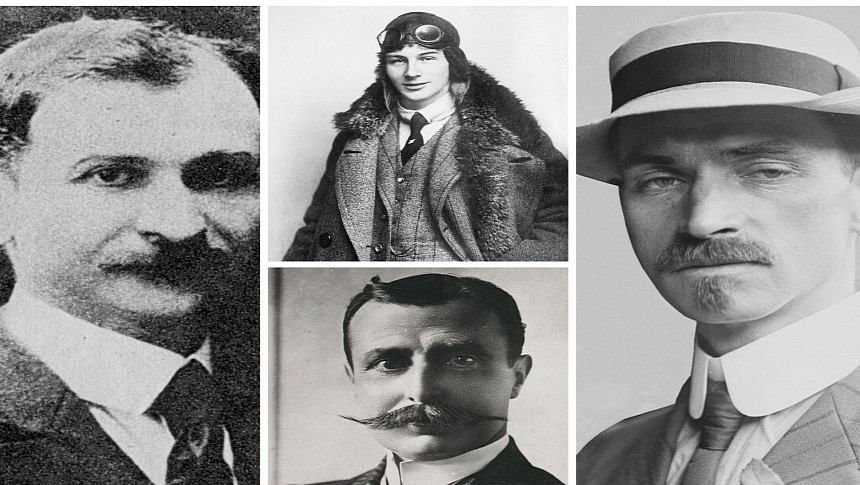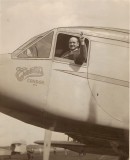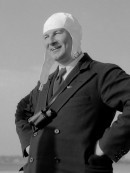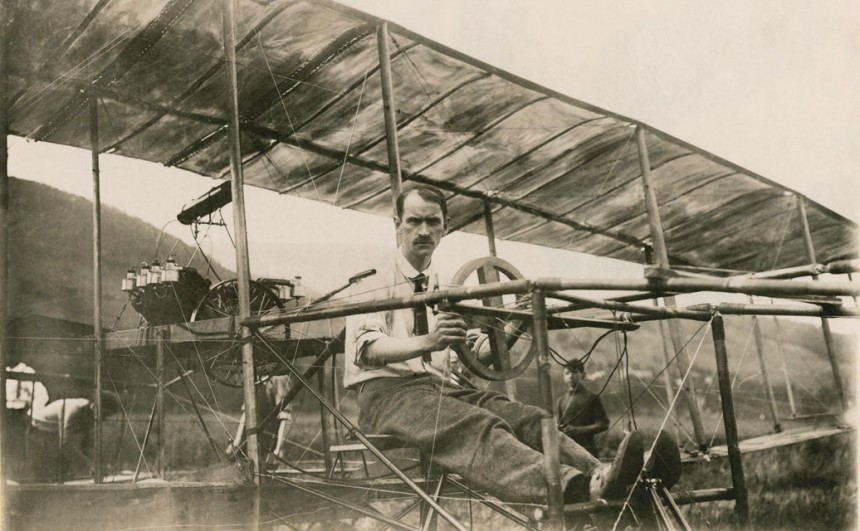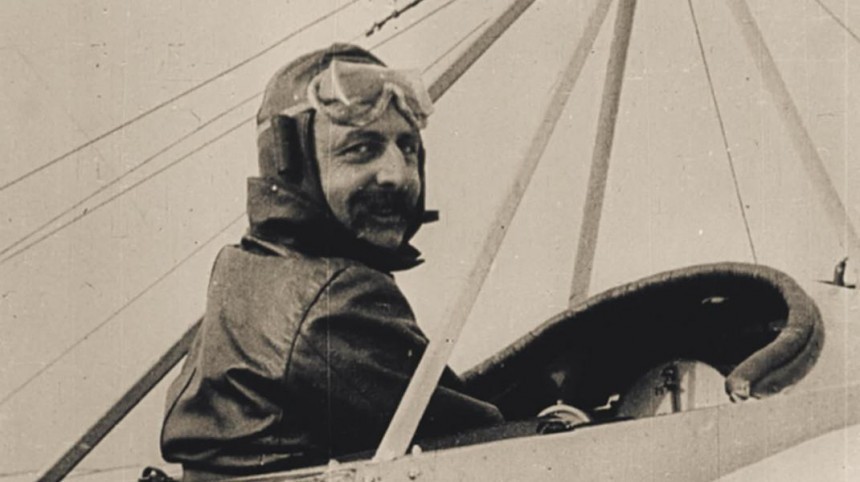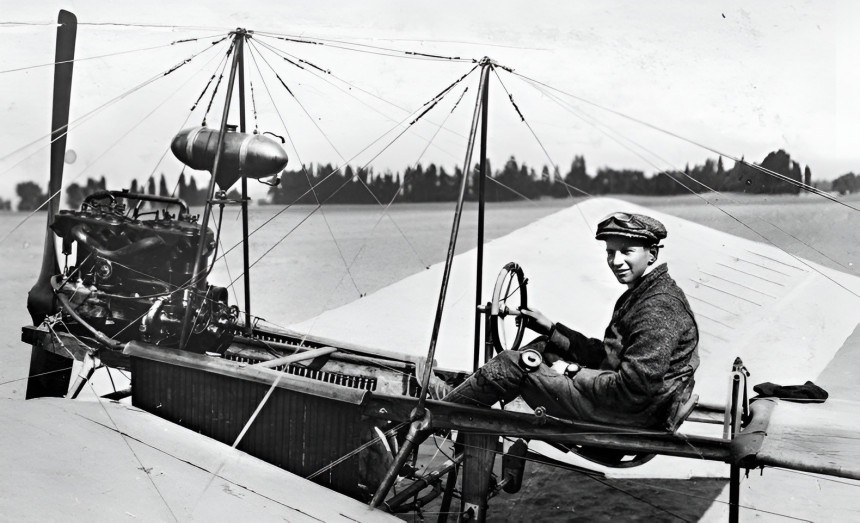When most people think of aviation's pioneer days, they remember Wilbur and Orville Wright and pretty much nobody else. Can you imagine if the modern tech industry was like this? Or if the only relevant names over the last 40 years were Bill Gates and Steve Jobs.
With that in mind, we'd like to take this opportunity to showcase some names from the earliest days of aviation that deserve just as much spotlight as the Wright Brothers.
Subsequent collaborations with the Aerial Experiment Association (AEA) organization founded by the inventor of the telephone, Alexander Graham Bell, gave Glenn Curtiss all the tools he needed to take his engineering skills to the next level. It was through this collective effort that Curtiss designed his first famous aircraft, the AEA Aerodrome #3, better known as the June Bug. Before long, this novel bird was winning national aerospace trophies for setting records in altitude and distance flown.
After leaving the AEA in 1909, Glenn Curtiss embarked on creating his own eponymously named aerospace company out of his hometown of Hammondsport before moving the operation to the city of Buffalo as the company grew. Around this time, Curtiss would also begin "wrestling in the mud," so to say, with both of the Wright Brothers as the two attempted to patent their novel method of aircraft control so that they alone could be the sole manufacturers of aircraft in the United States.
From the June Bug to the iconic JN-4 Jenny of World War I fame and every motorcycle, fifth-wheel camper, and flying boat in between, Glenn Curtiss spent his remarkably short 52 years on this Earth at the cutting edge of aeronautical development while also being a perpetual thorn in the rear ends of both Wilbur and Orville Wright. On a side note, Curtiss' considerable wealth allowed him to found three separate cities in the State of Florida. These are Miami Springs, Hialeah, and Opa-Locka, which is essentially the 1920s equivalent of purchasing Twitter. On these merits alone, Glenn H. Curtiss earns a spot on the aviation pioneer's Mount Rushmore.
Have you ever noticed something strange about the first Wright Flyer's design? Well, apart from the elevator controls sticking out the front of the aircraft rather than the rear, there's also the issue that it launched not from wheeled landing gears but from a fixed catapult. This alone, more than anything, was perhaps the biggest technological downfall that the Wright Brothers never entirely solved, even on later iterations of the Wright Flyer. With this in mind, say hello to Traian Vuia.
Born to ethnic-Romanian parents before the downfall of the Austro-Hungarian Empire, Traiain Vuia's ambitions for flight far exceeded the capacity of his homeland to accommodate his visions. As a young man and fresh graduate of the Polytechnic University of Budapest, Vuia, like Glenn Curtiss before him, embarked on a mission to find someone with the same ambitions for flight as he did. These travels eventually saw the young Vuia wind up in Paris, France, the proverbial cradle of early European aviation, where he met another engineer with similar ambitions named Victor Tatin.
With Tatin's help, Traian Vuia was able to design his first-ever airplane, the Vuia I, with help from the French manufacturing contractor Ateliers Hockenjos & Schmitt. Sporting a single mono-wing and a set of four bicycle tires for landing gear, unlike the Wright Flyer, it should be abundantly clear how Vuia's approach to flight controls is far closer to modern airplanes than anything the Wright Brothers manufactured by themselves. Vuia further refined his design with the Vuia II in 1907, sporting a more powerful engine and sophisticated control surfaces.
During his time in France, Traian Vuia also became a pioneer in the field of helicopters. He built two bespoke, semi-functional helicopter prototypes between 1918 and 1921, a full 20 years before Igor Sikorsky designed the world's first mass-produced helicopter, the R-4. Combine everything together, and Traian Vuia might have had a slightly better grasp of aeronautical mechanics than even the Wright Brothers did. At the very least, the man built considerably more practical airplanes. It's why your average domestic flight from New York to LA doesn't take off via catapult.
In an alternate reality, Louis Blériot was just a humble automotive engineer most famous for inventing and patenting the acetylene-powered automobile headlight. A man whose single bright idea made him rich beyond most people's wildest imaginations but not all that historically significant in other respects. But fate decreed that Blériot was more significant than just one good idea. A native of the City of Cambrai in Northern France, Blériot's considerable talents for aviation couldn't have come at a more opportune time in history.
Inspired by unsuccessful attempts at powered, human-crewed flight in his own country as well as the success of the Wright Brothers, Blériot founded his own aviation company, Recherches Aéronautique Louis Blériot (Louis Blériot Aeronautical Research), in 1909. By this point, Blériot had already designed four unsuccessful airplanes on his own, dubbed the Blériot types I through IV. Only one of them could fly, and even then, it crashed on its first test flight. Only on the fifth attempt, with the Blériot V, did one of Louis Blériot's designs finally take to the air and live to tell the tale.
Only two years later, in 1909, Louis Blériot became the first man in history to travel across the English Channel from Calais in France to Dover in Great Britain using a heavier-than-air, powered aircraft in his Blériot Type IX, designed in tandem with the lauded French engineer Raymond Saulnier. In doing so, Blériot completed a challenge issued by the British newspaper The Daily Mail with a reward of £1000, or roughly £152,000 (almost $190,000) in modern money, to be the first to accomplish this feat. In the years after this achievement, Bleriot's airplanes proliferated across the globe.
These aircraft became famous for familiarizing pilots with a control scheme consisting of a flight stick and twin foot pedals for the rudders that even modern pilots would identify as typical. For this reason, Bleriot's aircraft became the favorites of flight schools and pilot training programs from Europe to North America. Most famously, the American department store tycoon Rodman Wanamaker purchased a single Bleriot Type XI in 1910. This became the first aircraft ever imported to the United States. Eat your heart out, Airbus. For taking primitive aviation and making and making it profoundly better, Louis Bleriot absolutely deserves a spot among the big boys.
If you want an idea of how useless the average high school diploma used to be in the early 1900s, look no further than what the Dutch pioneer aviator Anton "Anthony" Fokker could do with his life without one. Born to plantation owners in a part of the Dutch East Indies that's a part of modern-day Indonesia, Fokker arrived on the aviation scene after other greats like the Wright Brothers and Glenn Curtiss had already established themselves. Indeed, a flight exhibition by Wilbur Wright himself, which Fokker attended, inspired the young engineer towards a career in the air.
Before the onset of World War I, Fokker had already designed and built a bespoke airframe and successfully flown it. Dubbed the Spin (Dutch for Spider), the first two prototypes were destroyed when one of Fokker's business partners promptly parked both of them into the side of a tree. By the onset of the war, Fokker, who'd moved to Germany in the 1900s, became one of the premiere manufacturers of military aircraft for the Central Powers of the war, namely Germany and the Austro-Hungarian Empire.
Famous pilots like Max Immelman and Manfred von Richthofen made their names behind the stick of Fokker aircraft like the DR.1 triplane, the Eindeker mono-plane, and the D.VIII biplane. Novel inventions present on Fokker's airplanes included the interrupter gear, a device that synchronized the fire from a machine gun mounted behind an aircraft's propeller to ensure the pilot didn't shoot their own prop to pieces.
At the war's end, Anton Fokker shifted his focus towards the civilian market, a place the company would stay until its bankruptcy decades later in 1996. For putting the aviation sector of all of Central Europe on his back, Anton Fokker is the perfect person to round off a list of aviation pioneers that don't include the Wright Brothers.
Glenn H. Curtiss: The man who walked so Elon Musk could run
If only every bicycle maker was as gifted with their own two hands the way Glenn Hammond Curtiss of Hammondsport, New York, was! Like the Wright Brothers, it was through the medium of the bicycle that Glenn Curtiss first cut his teeth in the medium of engineering. By the late 1890s, Mr. Curtiss was already retrofitting bicycles of his own designs with engines sporting carburetors he'd forged out of old soup cans. By 1908, he was fitting his motorcycles with V8 engines and setting land speed records with them.After leaving the AEA in 1909, Glenn Curtiss embarked on creating his own eponymously named aerospace company out of his hometown of Hammondsport before moving the operation to the city of Buffalo as the company grew. Around this time, Curtiss would also begin "wrestling in the mud," so to say, with both of the Wright Brothers as the two attempted to patent their novel method of aircraft control so that they alone could be the sole manufacturers of aircraft in the United States.
From the June Bug to the iconic JN-4 Jenny of World War I fame and every motorcycle, fifth-wheel camper, and flying boat in between, Glenn Curtiss spent his remarkably short 52 years on this Earth at the cutting edge of aeronautical development while also being a perpetual thorn in the rear ends of both Wilbur and Orville Wright. On a side note, Curtiss' considerable wealth allowed him to found three separate cities in the State of Florida. These are Miami Springs, Hialeah, and Opa-Locka, which is essentially the 1920s equivalent of purchasing Twitter. On these merits alone, Glenn H. Curtiss earns a spot on the aviation pioneer's Mount Rushmore.
Traian Vuia: A Romanian hero who built better airplanes than the Wrights
Born to ethnic-Romanian parents before the downfall of the Austro-Hungarian Empire, Traiain Vuia's ambitions for flight far exceeded the capacity of his homeland to accommodate his visions. As a young man and fresh graduate of the Polytechnic University of Budapest, Vuia, like Glenn Curtiss before him, embarked on a mission to find someone with the same ambitions for flight as he did. These travels eventually saw the young Vuia wind up in Paris, France, the proverbial cradle of early European aviation, where he met another engineer with similar ambitions named Victor Tatin.
With Tatin's help, Traian Vuia was able to design his first-ever airplane, the Vuia I, with help from the French manufacturing contractor Ateliers Hockenjos & Schmitt. Sporting a single mono-wing and a set of four bicycle tires for landing gear, unlike the Wright Flyer, it should be abundantly clear how Vuia's approach to flight controls is far closer to modern airplanes than anything the Wright Brothers manufactured by themselves. Vuia further refined his design with the Vuia II in 1907, sporting a more powerful engine and sophisticated control surfaces.
During his time in France, Traian Vuia also became a pioneer in the field of helicopters. He built two bespoke, semi-functional helicopter prototypes between 1918 and 1921, a full 20 years before Igor Sikorsky designed the world's first mass-produced helicopter, the R-4. Combine everything together, and Traian Vuia might have had a slightly better grasp of aeronautical mechanics than even the Wright Brothers did. At the very least, the man built considerably more practical airplanes. It's why your average domestic flight from New York to LA doesn't take off via catapult.
Louis Blériot: Aviation's first international superstar
Inspired by unsuccessful attempts at powered, human-crewed flight in his own country as well as the success of the Wright Brothers, Blériot founded his own aviation company, Recherches Aéronautique Louis Blériot (Louis Blériot Aeronautical Research), in 1909. By this point, Blériot had already designed four unsuccessful airplanes on his own, dubbed the Blériot types I through IV. Only one of them could fly, and even then, it crashed on its first test flight. Only on the fifth attempt, with the Blériot V, did one of Louis Blériot's designs finally take to the air and live to tell the tale.
Only two years later, in 1909, Louis Blériot became the first man in history to travel across the English Channel from Calais in France to Dover in Great Britain using a heavier-than-air, powered aircraft in his Blériot Type IX, designed in tandem with the lauded French engineer Raymond Saulnier. In doing so, Blériot completed a challenge issued by the British newspaper The Daily Mail with a reward of £1000, or roughly £152,000 (almost $190,000) in modern money, to be the first to accomplish this feat. In the years after this achievement, Bleriot's airplanes proliferated across the globe.
These aircraft became famous for familiarizing pilots with a control scheme consisting of a flight stick and twin foot pedals for the rudders that even modern pilots would identify as typical. For this reason, Bleriot's aircraft became the favorites of flight schools and pilot training programs from Europe to North America. Most famously, the American department store tycoon Rodman Wanamaker purchased a single Bleriot Type XI in 1910. This became the first aircraft ever imported to the United States. Eat your heart out, Airbus. For taking primitive aviation and making and making it profoundly better, Louis Bleriot absolutely deserves a spot among the big boys.
Anton "Anthony" Fokker: The real Flying Dutchman
Before the onset of World War I, Fokker had already designed and built a bespoke airframe and successfully flown it. Dubbed the Spin (Dutch for Spider), the first two prototypes were destroyed when one of Fokker's business partners promptly parked both of them into the side of a tree. By the onset of the war, Fokker, who'd moved to Germany in the 1900s, became one of the premiere manufacturers of military aircraft for the Central Powers of the war, namely Germany and the Austro-Hungarian Empire.
Famous pilots like Max Immelman and Manfred von Richthofen made their names behind the stick of Fokker aircraft like the DR.1 triplane, the Eindeker mono-plane, and the D.VIII biplane. Novel inventions present on Fokker's airplanes included the interrupter gear, a device that synchronized the fire from a machine gun mounted behind an aircraft's propeller to ensure the pilot didn't shoot their own prop to pieces.
At the war's end, Anton Fokker shifted his focus towards the civilian market, a place the company would stay until its bankruptcy decades later in 1996. For putting the aviation sector of all of Central Europe on his back, Anton Fokker is the perfect person to round off a list of aviation pioneers that don't include the Wright Brothers.
